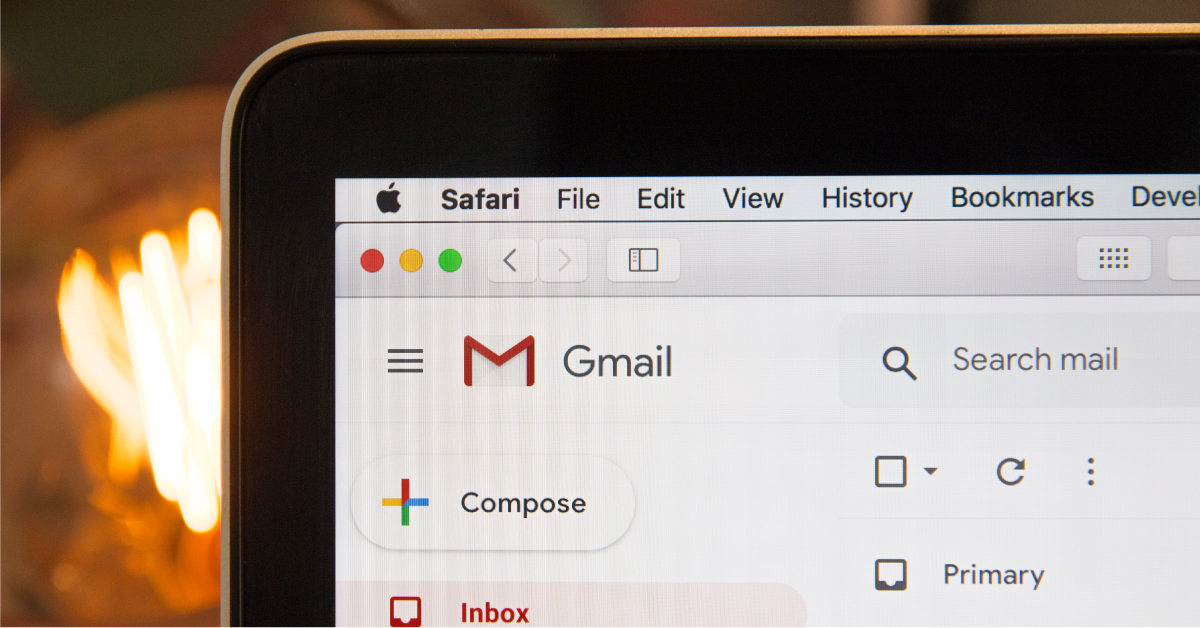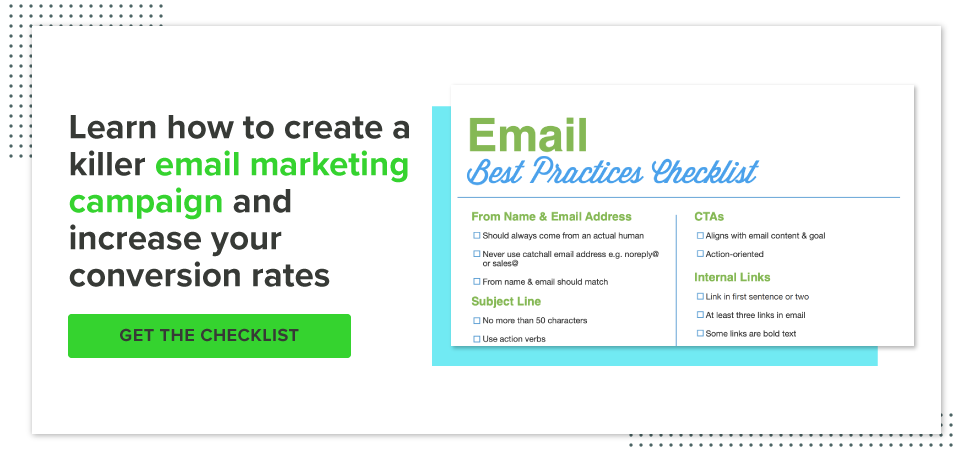Why Your Follow-Up Emails Are Ineffective (and How to Fix Them)

Follow-up emails are great to get a conversation going and reignite a prospect’s interest. They pick up where you left off and let you touch base with your lead to see how likely they are to convert.
They’re a great tool at any important part of your client’s journey, like when someone has used a demo of your product, has downloaded your content or has reached out to you to ask for information.
However, in a world filled with emails, follow-up emails are everywhere. They open with variations of the “just checking to see” line, and end up getting nowhere.
If you want to take advantage of follow-up emails, you need to write them the right way.
Why Your Follow-Up Emails Are Ineffective
Here are a few reasons why your follow-up emails may not be getting responses:
You’re redundant
Like any email, most follow-up emails don’t work because they repeat things over and over again, without giving any new information to the reader.
This is especially damning when your sales emails are well done because any email that doesn’t live up to the sales email will be underwhelming.
Why would your readers reply or even read your emails if they’re repetitive and boring?
You ask for something way too soon
This is a classic sales mistake. If you’re selling something and ask someone to pull the trigger when it’s too soon, you’ll end up scaring them away.
In follow-up emails, this can happen when they’re sent too soon, before the lead has time to fully digest your sales offer. Even if you’re waiting enough time to send the email, you may ask for closure or a meetup before the client is ready for either.
Like with love, the more desperate you seem, the faster they’ll run away.
You send them late
On the other hand, if too much time has passed, you risk your prospects moving on without you.
If you tell your leads you’ll send them an email soon and you end up sending it two or three weeks later, your leads may think they’re not important enough to be a priority for you.
And, if you’re not interested, why should they be?
You’re only following up once
We all would like to think that everyone spends as much time reading our emails as we spend writing them. The truth is, we’re lucky if those emails even get read to begin with.
Now, sure, you may get lucky and get people to read your emails almost as often as you send them. However, some people mistake the lack of a response for a “no.”
In reality, people miss emails all the time. You may need to reach out to your leads four or five times before the email catches them at the right moment for them to open the email, read it and reply to it.
You’re not being honest
You know when you meet someone you haven’t seen in a while and you both say you’ll make plans to hang out yet you never do? If you’ve ever had that conversation, you may know deep down that neither of you will ever reach out to hang out. It may be the way they said it or the excuse they gave, but whatever it is, we just know when someone’s not being truthful to us.
The same happens with follow-up emails. If you’re not being truthful about your intentions, the other person will never reach back to you because they’ll assume you may not even want them to.
This can happen when writing something like “I just wanted to reach out.” You’re not writing “just to reach out,” you’re writing because you want to sell something.
If you’re not being truthful in your emails, your leads will not reply to them.
How to Write a Follow-up Email After No Response (the Right Way)
Here’s how to write follow-up emails that get responses:
1. Remind them of the context
Never assume your lead remembers who you are or why you’re messaging.
Instead, remind them how you know them and the interaction you had with them. If they don’t remember you, this will help them place why you’re emailing. If they do remember you, this can show humility and approachability from your part.
Remind them about dates and times, locations or even an irregularity on your encounter, like “we met right before dinner” or “I’m the guy who spilled water on his tie”.
Make it personal and keep it brief.
2. Personalize your email
Nothing disarms a client more than seeing someone remember their name. That may even be why you keep going to that one Starbucks or look for that one waiter at your favorite restaurant. We want to be remembered.
So, why not show you remember your client?
Instead of writing a generic email, Bcc 30 leads’ emails and press “send,” take a few more minutes to write the lead’s name in each email. 74% of marketers say that email personalization increases customer engagement.
Include one or two relevant personal questions about topics that came out before. If they mentioned they weren’t liking the city during their visit to the convention, ask them if they found things to like after all. If they mentioned they had a sick relative, ask if they’re better now.
Make sure whatever it is that you’re asking is written in a positive way and double-check the name spelling before sending the follow-up email.
3. Clearly state what you want from them
As we’ve said before, no one wants to read boring, redundant emails. Instead, explain what you want in a way that’s consistent, friendly and brief.
Don’t use two or three sentences when you can use just the one.
Right after the introduction, clearly state why you’re emailing back. Offer the trial period, ask to schedule the meeting or do whatever’s next in their buyer’s journey, but keep it clear and to the point so your reader knows exactly what you want from them.
One way to avoid being boring by using email subject line testers to help you write compelling subject lines that actually get opens.
4. Give them a reason to email back
Your leads are most likely busy and may have better things to do than to take time to write back to someone who wants something from them. If you want them to reply, you need to give them a compelling reason for them to get out of their way to write a response.
One great way to do this is through scarcity. You can find an offer that’s relevant to them and let them know when they need to close the sale to take advantage of it. You can also remind them what they liked about your pitch and flesh out the benefits like you couldn’t before.
However you want to do it, find the thing they want and let them know how they’re just one email away from getting it.
5. End with a clear call-to-action
It’s not enough to just let them know who you are and what you want. The ending of your email will most likely be the most memorable part of it, so you need to use that to your advantage.
Write exactly what they need to do next in the last line of your email. This can be as simple as writing a sentence like “Are you available on Monday or Tuesday?” or “Which option is better for you?”
If you end with an effective call-to-action, it’ll be easy for your lead to know what to write back.
3 Follow-up Email Examples and Why They’re Great
Here are a few follow-up emails to get you inspired:
1. Follow up after no response — Apple
Apple’s customer support is one of the main reasons behind their success. Their customer support service goes above and beyond to help you with every Apple product you buy from them.
That’s something that Steven, from Super Office, found when he wrote to them about their iTunes store.
Steven first received the email you see above. This follow-up email was written to him after a couple of days without hearing from Steven since he hadn’t had time to respond.
And once Steven thanked them for solving his issue quickly, Apple responded with this:
This appreciative email was reason enough for Steven to list Apple as an example of what to do when writing a follow-up email and nailing customer support too.
Steal this idea:
Like Apple, don’t assume people don’t reply to you because they don’t want to reply. A good follow-up email after a few days without any response can indicate to your recipient that you care enough to reach back, and can encourage them to reply to you.
2. Follow up after an event — HubSpot
Your follow-up email is crucial after meeting potential clients at a conference, expo or networking event if you want to seal the deal.
In this template, HubSpot nails the length and personalization you should aim for when writing a follow-up email. Notice how the tone is kept as informal as possible, and the email naturally picks up where they left off, all while using a template.
Steal this idea:
You don’t need to spend a lot of time writing emails to personalize all of them. Instead, write a rough skeleton that you can use to personalize what you need.
If you’re sending too many emails, you can use software to send emails like Mailshake or Yesware that allows you to personalize them and send them in bulk.
3. Free trial follow-up — Groove
This follow-up email was sent by Groove to a member of the Close Blog team. Notice how, although slightly lengthy, the email is breezy, personalized and gives the client the right expectations of what’s coming forward.
Steal this idea:
Like Groove, if you’re a software company, use free trials to open a proper channel of communication with your leads. Let them know you’ll be emailing them soon so they know what to expect and ask simple, relevant questions to get the conversation going. But also if you don’t offer a software product you can use this email as inspiration. For example, if you’ve just won a paying customer you can send a similar email setting expectations and trying to start a conversation. This way, your new customer feels appreciated and valued.
Bottom Line
Your follow-up emails may have been ineffective, but they can drive results!
If you follow the tips and tricks we listed here, we’re sure you’ll be getting replies in no time. Use these tips to write irresistible emails and start getting responses right away.
Will Cannon
Will Cannon founded the lead generation company BWG, which was used by companies like Dropbox, Morgan Stanley, ADP, and many other Fortune 500 companies. Will Cannon is currently the founder and CEO of UpLead. Ranked the #1 easiest to use sales intelligence platform by G2, UpLead is a B2B sales intelligence platform...





